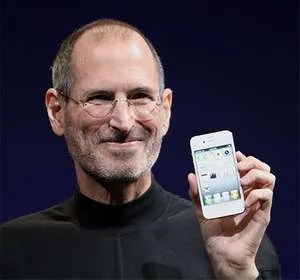Our Tech Zeitgeist: The shift from design to insight

Over the last 10 years I’ve noticed a shift in tech. Well at the very least in myself, but as we are so much a reflection of our environment I can’t help but believe this shift is more than just a personal one.
Namely, I feel we have shifted the central locus of our tech culture from one that venerates design to one that celebrates insight. Another way to put this is that we have tempered our obsession with objects and experience (the physical world) to make room for our insatiable hunger for thought and wisdom (the intellectual world).

Specifically, I am comparing today to approximately the years of 2007-2010. This was the heyday of the iPhone and mobile apps. Steve Jobs was unquestionably the cultural leader of our industry. Through him and Apple’s success we learned the power that comes from a singular focus on aesthetics and user experience.
What I remember about these days is how “design thinking” was en vogue and became a primary lens for how we evaluated things. We were increasingly directing our attention to the form of things. This is true of physical objects like the phone but also in software – particularly apps. Back then I would pour over design details of things as mundane as the Calculator app and gestures like the swipe to unlock your phone. There was even a big commotion over the “discovery” of the pull-to-refresh pattern. For someone too young to have been in tech during this time this may sound like the providence of #DesignTwitter, but really we were all thinking about these details.

A particular example that stands out for me is the app Path. In the first year or two after its launch, tech circles were fixated on each of their releases. This was especially interesting as Path never fully quite achieved the adoption that would warrant such attention. But they were clearly leaders in design. I remember people on Twitter gushing over the release of Path 2.0 and the animation they designed for picking your post type. We were all enthralled and many of us to this day have real nostalgia for this era – I know I do all the time.
While design is still clearly important, in my opinion, it isn’t in the cultural driver’s seat as it was before. Today’s tech culture has shifted its focus to knowledge. Today, when you open up Twitter or turn on a podcast you’ll see references to philosophers and scientists, white papers and out-of-print books on sociology and economics. Perhaps this is largely just a phenomenon of “software eating the world” but our tech ambitions knows no bounds anymore – every problem is a tech problem, and every discipline is being probed by tech. The focus is no longer on consumer apps and pixels but rather on protocols and incentives.
This tweet could not be embedded. View it on Twitter instead.
I don’t think we have an obvious leader anymore like a Steve Jobs, but some of the more influential are people like Naval Ravikant and Peter Thiel. Last time I heard Naval give his bio he scarcely talked about his tech background – he’s essentially a philosopher now. And just look at the syllabus for the course Peter Thiel is currently teaching at Stanford.
I’m not trying to make a judgment on this shift, merely to point it out. I think spotting these shifts are a good reminder that there are different ways to make sense of the world. There is power in plugging yourself into the zeitgeist of the day, just so long as you keep perspective that there are many ways of seeing.